The new Deadpool & Wolverine doesn’t just combine two separate branches of Marvel’s cinematic efforts but two characters who have been dueling in its comic pages for going on 30 years. Deadpool, the mercenary who’s known for breaking fourth walls as much as he’s known for decapitating bad guys, is a natural foil for Wolverine, the X-Men’s mutton-chop-wearing loner who isn’t interested in making new friends. Especially when those friends talk as much as Deadpool.
As such, they’ve made for perhaps the best odd-couple pairing in all of Marvel’s universes and have quarreled, fought, and even teamed up many times in the three decades since their first altercation. Although both characters have been accused of overexposure (they’re also heavyweight Marvel moneymakers), these two flawed antiheroes somehow bring out the best in one another as reminders of their shared humanity. So, before you head to theaters to watch Ryan Reynolds and Hugh Jackman squabble, check out some of the comics (and one animated short) that have sealed their characters’ gory, hilarious legacy.
Note: The dates listed are the cover dates rather than the date that the comics were actually published. This makes them a little easier to find when you’re searching through Marvel’s massive backlog.
Wolverine Vol. 2, No. 88 (December 1994)
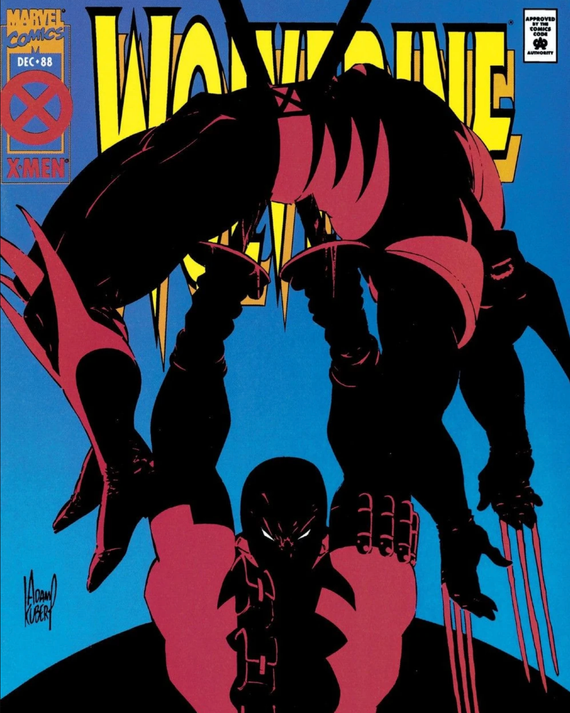
Photo: MARVEL
The first official meeting between Wolverine and Deadpool goes how you’d expect — violently. At this point, Wolverine (a.k.a. Logan) was a comfortable fixture of the Marvel universe. Since his debut in 1974, he’d become a Swiss Army Knife character — lovable enough for some heartwarming bits, prickly enough to throw into antihero territory, and with an ever-broadening backstory that seemed to allow for anything. Deadpool (Wade Wilson) on the other hand, was an unhinged rising star, hopping around comic titles with a manic glee that absconded from the self-seriousness that much of the genre had accrued.
Though both were former experiments of the shadowy Weapon X organization (and meet here while seeking out their connections with other past members), their burgeoning rivalry is less based around longstanding bad blood and instead around something far more visceral — neither one can really physically die. Both have amazing healing powers, which means that the outrageous Deadpool is left to eternally annoy and stab the grizzled Wolverine, and Wolverine will never be able to cut the merc up and/or shut him up. They’d have more important duels in the future, but this comic, in retrospect, feels like a bit of a eureka moment.
Wolverine Annual 1995 (September 1995)
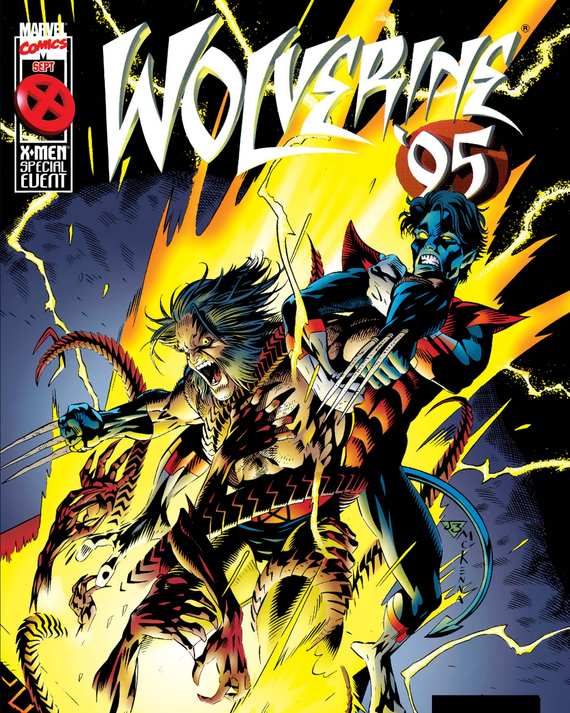
Photo: MARVEL
After their initial meeting, it doesn’t take long for Wolverine and Deadpool to team up for the first time, though it would play second fiddle as the backup plot in the plus-size 1995 “Annual” issue. As such, the story itself is a little rushed: Wolverine races to save Deadpool, then helps him fight his way out of a nefarious science lab. It doesn’t really reek of an upcoming blockbuster-movie adaptation with them as co-headliners.
However, the ’90s were a weird time for Wolverine. Having been stripped of the adamantium that was bonded to his bones, Logan was going through a kind of “feral regression,” which essentially meant that he was somehow grumpier than before. He wasn’t alone in the realm of unstable, evolving fan favorites — Venom spent the decade going from deadly Spider-Man doppelgänger to growling vigilante. But in saving Deadpool, a guy who he’d met once and loathed, the story showed a glimmer of hope for the nastier version of Logan. And it complicated their relationship for the better: What if Deadpool could inspire more in Wolverine than just hate?
Deadpool Vol. 3, No. 27 (April 1999)
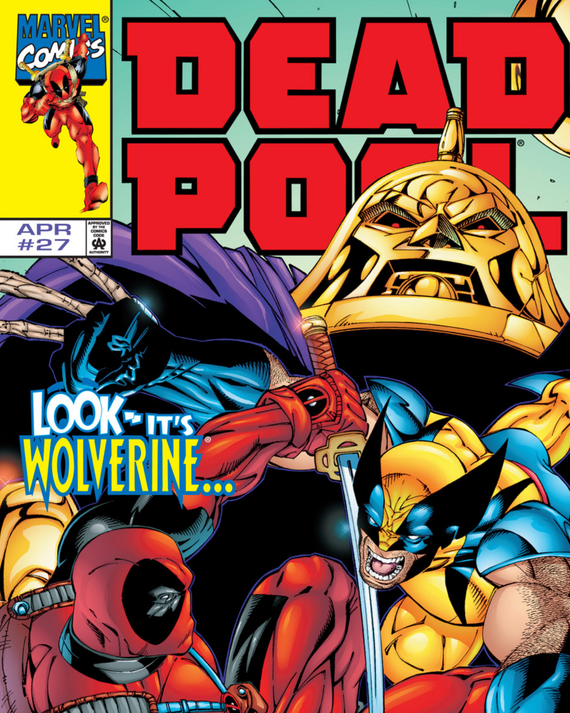
Photo: MARVEL
One important thing to know about Deadpool is that the movie version is more restrained than the comic book incarnation. In the comics, Deadpool has a streak of absurd meanness, one that Ryan Reynolds’s affable teasing has never quite captured. This sanitizing of a messy character is par for the course for movie adaptations of comic books (see also The Mask and the 1995 Judge Dredd). You gotta make back that $250 million budget somehow. But it means that we’ll likely never get a scene like the one in Deadpool Vol. 3 No. 27 where he beats up Kitty Pryde just to get a rise out of Wolverine.
While certainly not a “good guy” thing to do, Deadpool’s violence against an X-Man was supposed to be a form of therapy. He’s been tasked by his wacky psychiatrist to get in an extended superhero brawl with someone because it might help ease his hallucinations. But even Deadpool has a bit of pathos, as those hallucinations feature a long lost lover of his. And while Wolverine doesn’t quite get it, and sees Deadpool through blood-soaked goggles throughout the encounter, it doesn’t change the fact that when Deadpool needed psychological aid, he sought out Wolverine. It’s not exactly heartwarming, but it does affirm them as Marvel’s finest star-crossed haters.
Wolverine Annual 1999 (December 1999)
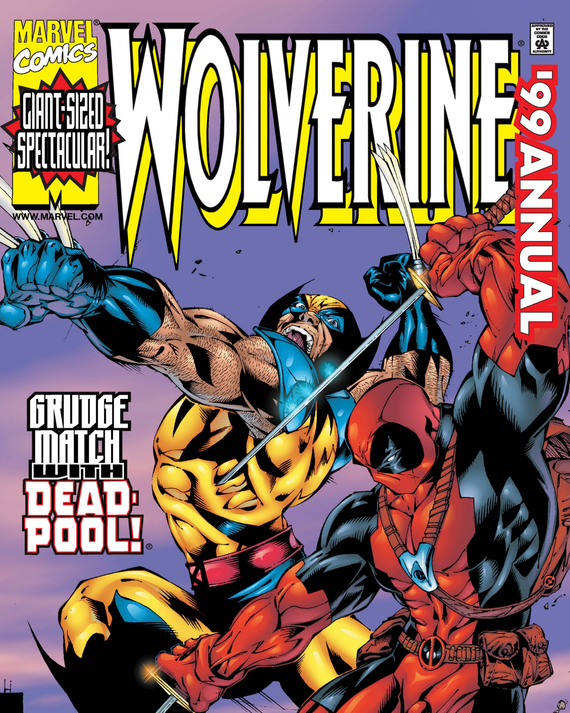
Photo: MARVEL
“Wolverine and Deadpool cautiously team up to fight a werewolf all while Wolverine tries to defend a guy that knows the werewolf that Deadpool is trying to assassinate” is probably the most 1999 Marvel Comics plot that anyone has ever heard of. The story barely holds itself together, with the glue coming solely from the chemistry between Wolverine and Deadpool, who, at this point, are a lot of fun to watch together. Even the characters are having a good time — after Wolverine pops Deadpool in the face for what he did to Kitty Pryde in their last meeting, he agrees to get a beer with him. They’ve truly come a long way.
That said, the major thing that makes this comic integral to their relationship is that it ultimately feels character driven, running on the emotions of two well-established figures. The ’90s are often lambasted for their continuous, cross-title story arcs and ceaseless “big event” promotional tactics. And someone like Wolverine, who is so embroiled in both current narratives and his own labyrinthine backstory, was far from immune. Deadpool, who, by nature of his character, is allowed to float in between the panels, can be an outlet for who he’s involved with. He draws them out of their impossibly convoluted comic logic and lets them be naturally reactive.
Wolverine Vol. 2, No. 154 (September 2000)
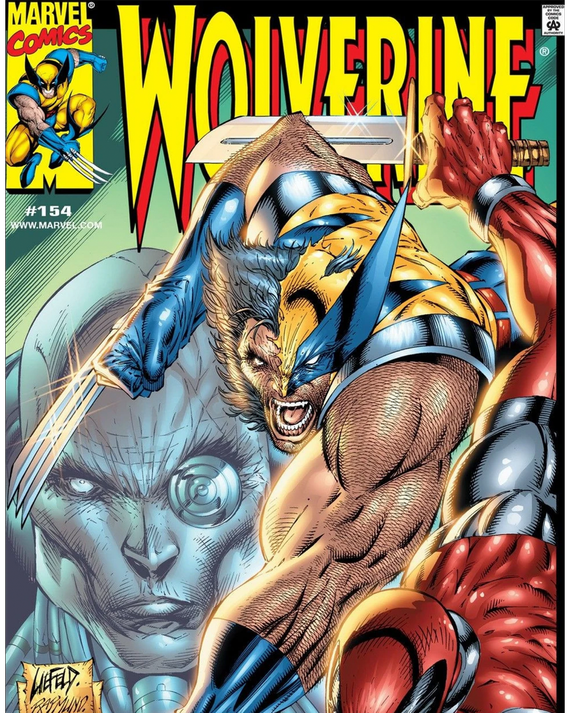
Photo: MARVEL
One thing that became evident in Marvel comics after the turn of the millennium was the incremental effects the movies (that were based on the comics!) had on the new pages. Blockbusters like X-Men (2000) and Spider-Man (2002) would influence alterations (often visually) that would synergistically align the two mediums. As such, reading a comic from Rob Liefeld, the co-creator of Deadpool, can feel like a blast from the past. Even the lean Deadpool becomes a meaty titan of flesh in Liefeld’s hand. And his Wolverine? He’s a wrecking ball with biceps.
But while the last comic illustrated the freeing effect of Deadpool on his co-stars, this comic works in the opposite direction. Because Deadpool can so often be turned into a punch-line-delivery vehicle, it can be hard to pin down any emotional through-lines. When Wolverine asks him why they’re fighting again after everything seemed cool, Deadpool just shrugs it off. Wolverine is a character of intense dedication, a guy who doesn’t make friends easily and only keeps a small batch of allies close. While Deadpool loosens Wolverine up, Wolverine reminds Deadpool of being human — leading Deadpool to reckon with feelings with more weight than whatever gag line a writer has shoved in his mouth.
Cable & Deadpool Vol. 1, No. 43 (September 2007)
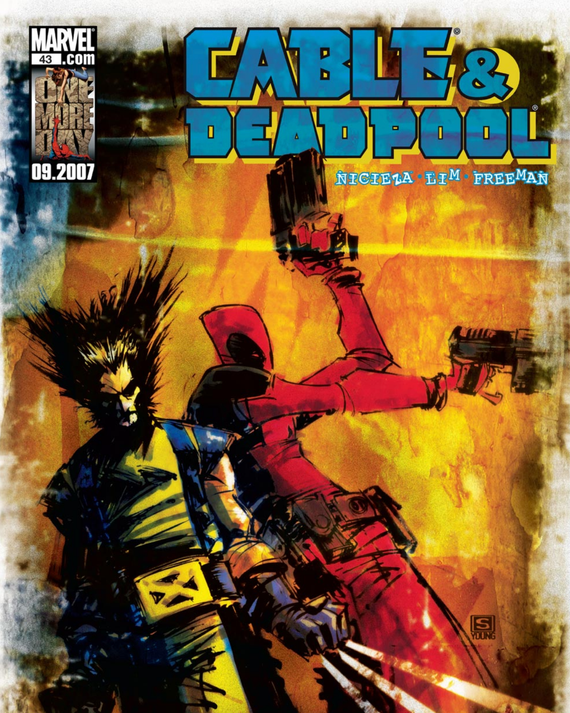
Photo: MARVEL
It’s not too hard to pull Deadpool and Wolverine back into action against one another, especially considering that, on his best days, the latter merely tolerates the former. Marvel friends duking it out has been a staple since the Stan Lee/Jack Kirby/Steve Ditko days. (Millions of comics have been bought on the back of promises like “SPIDER-MAN FIGHTING THOR TO THE DEATH? WHA-WHA-WHATTTTTT?”) But Deadpool is ferocious and annoying and Wolverine is ferocious and easily annoyed, so whenever they butt heads, it feels like a natural extension of their dynamic and less like a promotional gimmick.
Still, their reunions don’t necessarily make sense at times. Here Wolverine is out for blood and trying to take down HYDRA and kill Deadpool’s pal Weasel (who has his own misunderstood plan for HYDRA). So Cyclops asks for Deadpool’s help in reining him in? Won’t that just make him angrier? (Unless that is Cyclops’s point. Why possibly die trying to stop Wolverine when you can send the most frustrating man in the Marvel universe to do it instead?) What eventually sells the clash is Deadpool’s enthusiasm about it, and it’s a conflict that results in Deadpool momentarily getting his head sliced off. Rad.
Wolverine Origins No. 21 – March 2008
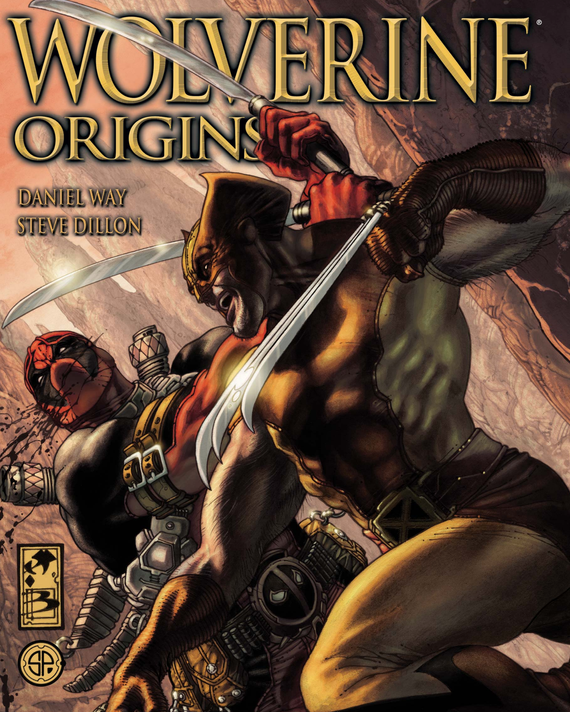
Photo: MARVEL
Despite the title, Wolverine: Origins has less to do with Logan’s formative years and more to do with Wolverine’s secret son whom he didn’t know he had. It puts Wolverine in, for lack of a better phrase, an emotionally heightened state. And as we’ve seen so far, Wolverine already being in one of his moods is prime material for a Deadpool appearance. But even amid the plot twists, Wolverine and Deadpool take the focus here with a battle that lasts almost five straight issues.
This extended fight allows Wolverine and Deadpool’s combat to take a gory Looney Tunes cadence, something that’s inherently funny even in a battle to the death (Wolverine even gets smashed by a falling piano in the story). What can these two throw at each other that they won’t be able to come back from? At this point, it becomes clear that even when one threatens death against the other, neither of them will ever have the thematic heft to be the true victor. They will continue to reunite and cross swords with claws for as long as we like seeing them do it.
Uncanny X-Force Vol 1., No. 1 (December 2010)
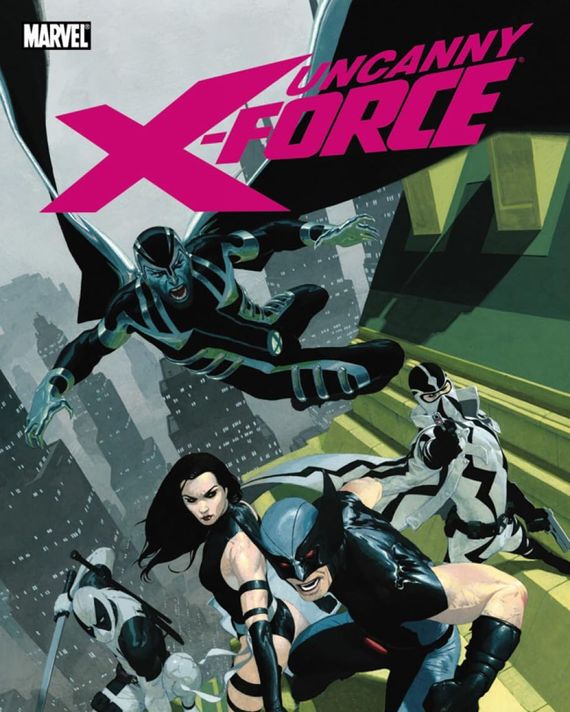
Photo: MARVEL
Though Deadpool’s star turn in his 2016 film was treated as a breath of fresh air in the cinematic section of the superhero genre, the character’s reputation in the comic books was a little more knotty. Deadpool had erupted into such a fan-favorite character so quickly that by the end of the aughts, he’d fallen prey to overuse. His shtick had gone from exhilarating to hackneyed and in the wrong hands, he wasn’t a character as much as he was a loose collection of jokey dialogue. Thankfully, writer Rick Remender aimed for something different, and to date, his work on Uncanny X-Force is Deadpool’s finest comic-book hour.
Not only is it the first time that Deadpool has truly and cohesively worked on a big team (paired with Archangel, Fantomex, Psylocke, and Wolverine, each bearing deep wounds from the past), but it also captures a kind of odd innocence and tortured ethos. He’s simultaneously gross and childlike, a character that will never really grow up. And you get to understand, on an emotional level, why Wolverine, the surly father figure of Prof. Xavier’s school, would become attached to him.
It also explains why Deadpool is so appealing to comic fans. It’s very easy to feel like an outsider when you’re young and obsessed with comic books, and so you develop all of these specific bits of bizarre lore and references with what can seem like a fairly limited crowd of like-minded obsessives (especially prior to our current internet ecosystem). Then Deadpool arrives, a guy who’s also an outsider, and bears all of the knowledge that you’ve locked away and is already in on all of your jokes, too. Deadpool can certainly be exhausting, but he can also feel like an untouched treasure to each new generation of comic readers who discover him.
Wolverine & Deadpool: The Decoy (September 2011)
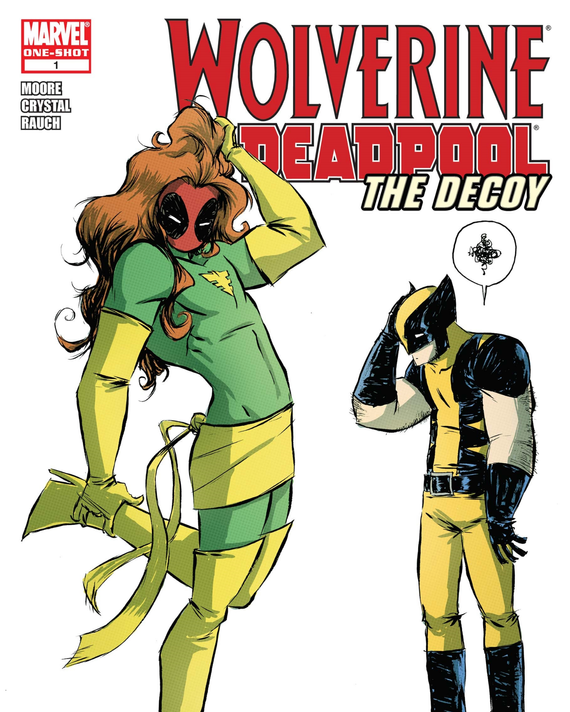
Photo: MARVEL
Sometimes, you don’t need a wider, intricate scheme to bring Deadpool and Wolverine back together. Sometimes you just need a killer robot. Wolverine & Deadpool: The Decoy doesn’t thread into much of the wider Marvel story aside from a comic-book reader’s knowledge that sometimes the two get together and it’s funny. But instead of Deadpool tracking down Wolverine, it’s Wolverine who goes to Deadpool for help. And that help involves Deadpool dressing like Jean Grey (who the robot is hunting) and getting pummeled while Wolverine tries to figure out a way to take the big metal foe down.
The Decoy is bare bones, but it’s also the kind of story that a near-20-year rivalry can pull off without much setup anyway. When Wolverine contemplates who would be foolish enough to take his offer, you immediately know who he’s talking about. And when Wolverine gruffly drags Deadpool’s battered body away from the scene of the battle, you sense a kind of warped brotherhood. Do they like one another? No, not really. But they do need one another.
Deadpool: The Good, the Bad, and the Ugly (October 2013)
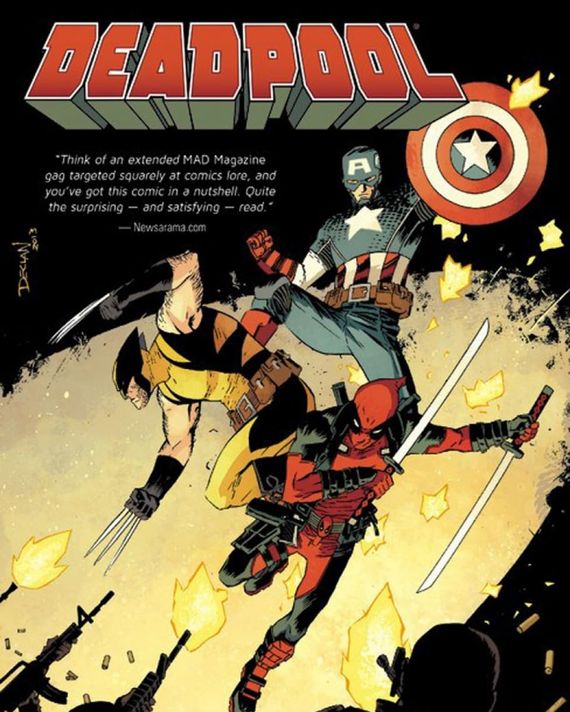
Photo: MARVEL
Though much of this list is devoted to Deadpool and Wolverine taking center stage, there’s also some great stuff to be found when other characters are exposed to their particular dynamic. The Good, the Bad, and the Ugly, one of the story arcs in the fantastic Deadpool collaboration of writers Gerry Duggan and Brian Posehn, throws Captain America into the mix. He doesn’t seem like a natural fit until you realize that he, too, is the product of human experimentation. And together, the trio represents a kind of multiple-choice question for how mankind’s scientific hubris has worked out in Marvel comics.
Like Uncanny X-Force, this story taps into Deadpool’s humanity and rather than focus just on what he is, it gives us insight into what he wants. Of course, if you’re looking for Deadpool as a joke book or as an über-violent ninja, there are plenty of other places to go (Deadpool Kills the Marvel Universe is a surprisingly dour comic that’s full of the latter.) But The Good, the Bad, and the Ugly dissects Deadpool and lays out his aspirations beyond effortlessly bouncing through Marvel Comics, all while contrasting him to Wolverine, a guy who often believes that aspiration is futile.
Deadpool vs. Old Man Logan (December 2017)
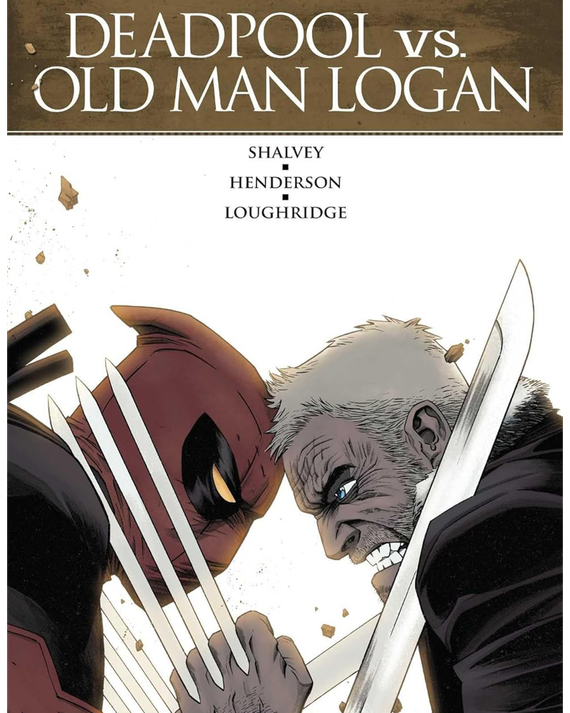
Photo: MARVEL
With the massive success of the Deadpool film, comic shelves were faced with a flood of Deadpool titles. Their quality was all over the place, but one that stood out in particular was Deadpool vs. Old Man Logan, a comic that seemed to exist in order to ask the question “Would Deadpool and Logan get on one another’s nerves even if one of them was from an entirely different universe?” And the answer is “Yeah!” No span of space and time is enough to keep Deadpool and Wolverine from attempting to beat each other up.
The plot harkens back to earlier comics as Logan wants to accomplish something and Deadpool keeps getting in his way. (In this case, it’s finding a very powerful mutant before she falls into the wrong hands.) And while it doesn’t reveal much about either character on a psychological level, it is a fun romp that makes for a great lead-in to Deadpool & Wolverine, a film that is also about universe hopping and an unlikely friendship between two very deadly, very different characters. But that’s become the status quo in comics, animation, video games, and live action. If there is a Wolverine, somewhere there is a Deadpool just waiting to irritate him.
BONUS: “Hulk vs. Wolverine” (Animated Short, January 2009)
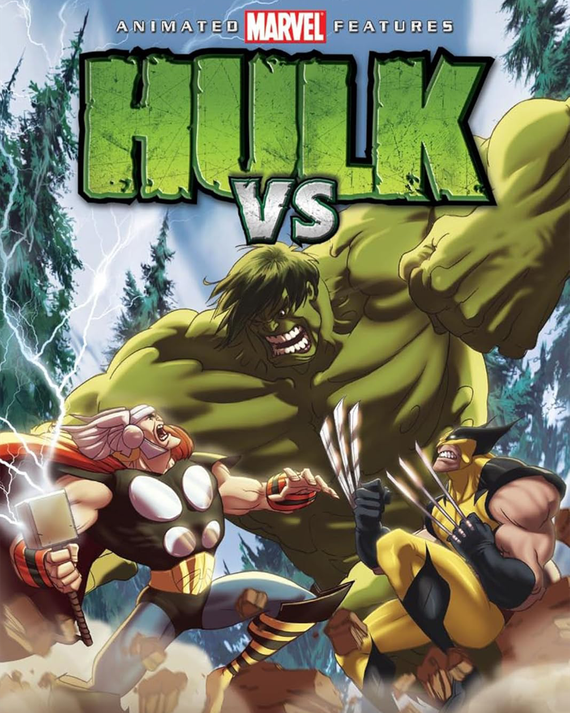
Photo: MARVEL
If you want even more of the Deadpool and Wolverine dynamic, then check out this animated movie. Though it shares the Hulk Vs. DVD with a second round (Hulk also takes on Thor), “Hulk vs. Wolverine” is the more fun of the two. The story not only re-creates Wolverine’s origin issue, in which he wrassled with the Hulk, but also incorporates Wolverine’s tangled Weapon X past. And with that past comes a who’s who of Wolverine’s archfoes: Sabretooth, Lady Deathstrike, Omega Red, and, of course, Deadpool.
Though Deadpool had appeared in nonspeaking cameos in X-Men: The Animated Series, Hulk Vs. is the first onscreen version of Deadpool where he’s an actual character (even predating Ryan Reynolds’s lackluster first appearance as Deadpool in the X-Men Origins: Wolverine film by a few months). For voice actor Nolan North, it would begin a long association with the character and it’s easy to see why: North’s Deadpool is a cackling lunatic, equally consumed by bloodlust and quips. For some who have heard his subsequent Deadpool video-game work, he’s their preferred Deadpool and he makes an excellent start in this fast-paced cartoon.
